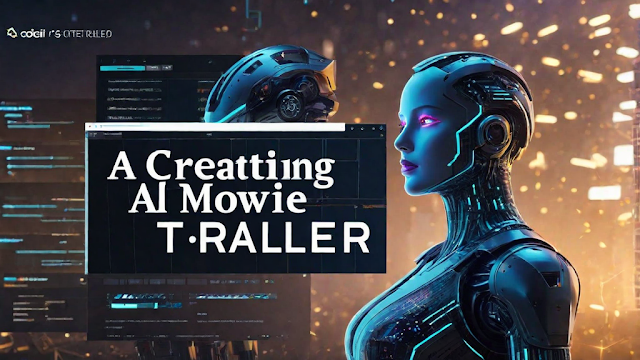Introduction
Recently, there has been a surge in the creation of amazing movie trailers using AI technology. These trailers showcase the power of artificial intelligence in generating captivating visuals and narratives. In this blog, we will explore the step-by-step process of creating an AI-generated movie trailer, using a combination of AI tools and platforms. Through this process, we will demonstrate how AI can be leveraged to produce high-quality trailers that engage and captivate audiences.
Step 1: Creating the Trailer Outline
Our journey begins with Chat GPT, an advanced language model. Using Chat GPT, we start by creating an outline for the movie trailer. In this case, we prompt Chat GPT with the request to create a movie trailer with 15 scenes, featuring Leonardo DiCaprio as the main character. The trailer should revolve around the theme of saving the world from an AI takeover, with elements of fire, smoke, and intense drama. Amazingly, Chat GPT generates a comprehensive script with detailed descriptions for each scene, setting the stage for our movie trailer.
Step 2: Generating Visuals
With the trailer outline in hand, we move on to generating visuals for each scene. We utilize AI tools like Mid Journey and Dolly to create still images that capture the essence of each scene. Mid Journey offers prompts for generating futuristic cityscapes, while Dolly provides the ability to generate realistic close-ups of a character resembling Leonardo DiCaprio. By combining the outputs of these tools, we are able to create visually stunning images that bring our trailer to life.
Step 3: Animating the Scenes
To add movement and dynamism to our trailer, we turn to Runway Gen 2. With its motion brush feature, we animate each scene by selectively applying motion to specific elements within the images. This allows us to create a sense of movement and action, enhancing the overall impact of the trailer. By carefully animating each scene, we are able to create a visually compelling narrative that captures the attention of the audience.
Step 4: Narration and Voiceover
To give our trailer a professional touch, we need a captivating voiceover. For this, we use 11 Labs, an AI-powered platform for voice synthesis. Using a deep male voice, we generate the narration for each scene, following the script provided by Chat GPT. The generated voice captures the urgency, drama, and emotion of the trailer, adding depth and authenticity to the overall experience.
Step 5: Background Music and Sound Effects
No trailer is complete without the perfect soundtrack. To create a cinematic atmosphere, we turn to AI tools like Mubert, which generates music based on a given mood or genre. We select an epic and heroic track that complements the intensity of our trailer, setting the tone for the entire video. Additionally, we use Bark, an AI sound effects tool, to add sound effects like TV static and other atmospheric elements that enhance the audiovisual experience.
Step 6: Bringing It All Together
With all the elements in place, it's time to bring our movie trailer to life. We use Da Vinci Resolve, a powerful video editing software, to assemble the scenes, voiceovers, music, and sound effects into a cohesive and seamless trailer. By carefully aligning the visuals with the narration and music, we create a captivating and immersive experience for the audience.
Conclusion
Creating an AI-generated movie trailer is a fascinating process that showcases the potential of AI technology in the field of filmmaking. By leveraging AI tools and platforms like Chat GPT, Mid Journey, Dolly, Runway Gen 2, 11 Labs, Mubert, and Bark, we can generate visually stunning trailers with compelling narratives and captivating soundtracks. While the process still requires some manual input and adjustments, it is evident that AI is rapidly advancing in its ability to automate and streamline the trailer creation process. As AI continues to evolve, we can expect even more impressive and seamless results in the future.
People also ask



.jpg)


.png)



